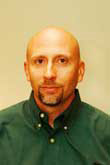And herein lies
the discordant nature of the false dichotomy and distortion masked by the
"status quo" refrain.
The status quo
of the U.S. includes a tremendous equity gap that
benefits the ones at the top--including all of the faces on the new reform
movement--and that is maintained when schools remain overburdened by
poverty and bureaucracy. The new reformers are perpetuating inequity through
their misrepresentation of failing schools, "bad" teachers, and
corrupt teachers unions; in effect, then, the new reformers are the true
defenders of this status quo: U.S. public schools are a mirror held up to
political and corporate failures that have created a stratified society, with
the gaps widening; the achievement gap in our schools is evidence of an equity
gap in our society, not a direct commentary on teacher or school quality.
This irony is
chilling as well because the sincere critics of social failures in the U.S. and
bureaucratic mismanagement of public schools are being demonized and
marginalized. But the new reformers are allowed to create crisis and recommend
reform that appears more likely to benefit the reformers than impact positively
the schools:
"Hundreds
of private philanthropies together spend almost $4 billion annually to support
or transform K -12 education, most of it directed to schools that serve
low-income children (only religious organizations receive more money). But three funders--the Bill and Melinda Gates Foundation, the Eli
and Edythe Broad (rhymes with road) Foundation, and the Walton Family
Foundation--working in sync, command the field . Whatever nuances
differentiate the motivations of the Big Three, their market-based goals for
overhauling public education coincide: choice, competition, deregulation,
accountability, and data-based decision-making. And
they fund the same vehicles to achieve their goals: charter schools,
high-stakes standardized testing for students, merit pay for teachers whose
students improve their test scores, firing teachers and closing schools when
scores don't rise adequately, and longitudinal data collection on the
performance of every student and teacher."
While the media
continues to perpetuate the new reformers' false dichotomies and
mischaracterization of defenders of the status quo as well as never questioning the reformers' motives, the new reformers' solutions for their manufactured
status quo fail to stand up to evidence:
"'Race
to the Top' and Waiting for Superman
made 2010 a banner year for the market-based education reforms that dominate our national discourse. By contrast, a look at the
'year in research' presents a rather different picture for the three pillars of
this paradigm: merit pay, charter schools, and using value-added estimates in
high-stakes decisions. . . .Overall, while 2010 will
certainly be remembered as a watershed year for market-based reforms, this wave
of urgency and policy changes unfolded concurrently with a steady flow of solid
research suggesting that extreme caution, not haste, is in order."
2010 has offered
us an ironic lesson, but one that isn't very appealing. The public seems
willing to accept anything repeated by the elites--millionaires,
politicians, and celebrities--but just as quick to disregard evidence from
sincere reformers.Next Page 1 | 2
(Note: You can view every article as one long page if you sign up as an Advocate Member, or higher).
An Associate Professor of Education at Furman University since 2002, Dr. P. L. Thomas taught high school English for 18 years at Woodruff High along with teaching as an adjunct at a number of Upstate colleges. He holds an undergraduate degree in (
more...)





